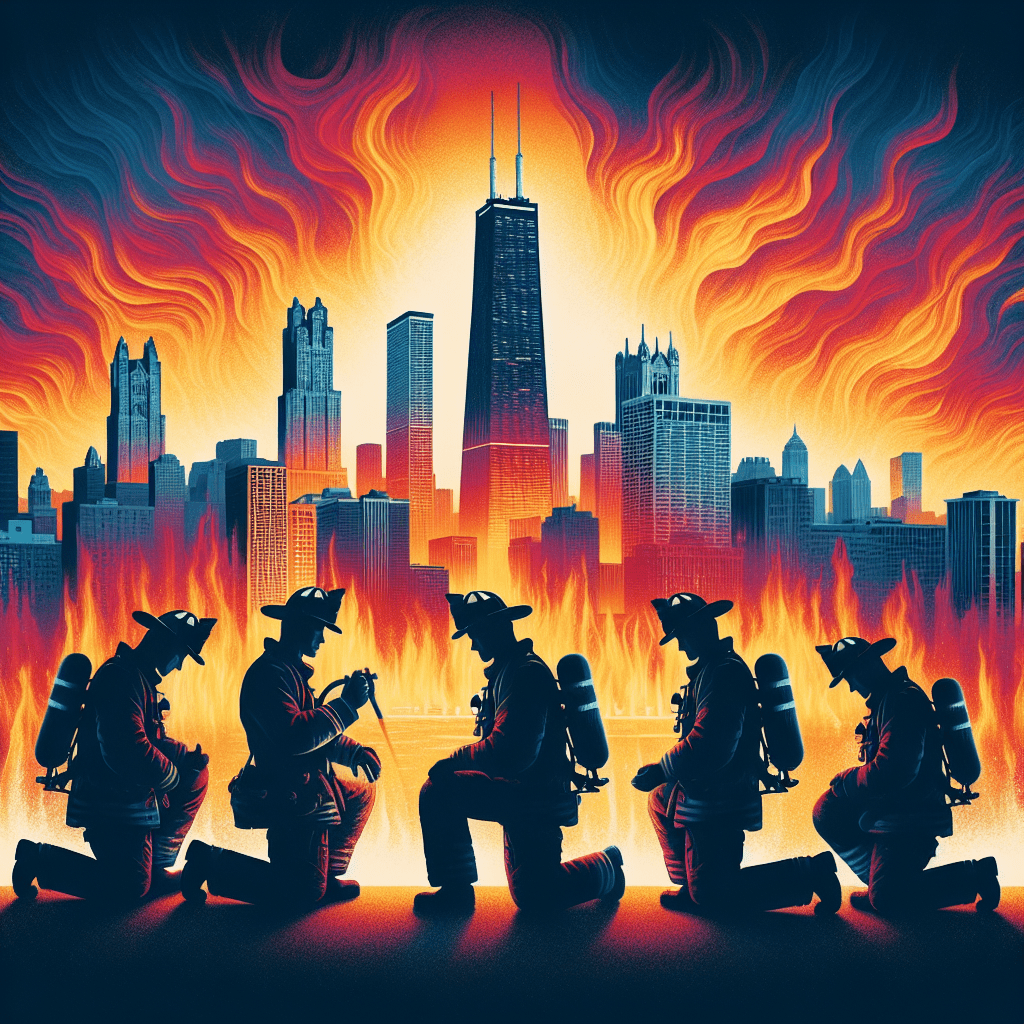## Overview of the Chicago Fire and Its Impact
Chicago has been a site of rapid growth and industrial prowess in the United States; however, it has also been host to calamities that have shaped its history profoundly. One such event is the Great Chicago Fire, a defining moment that commenced on the evening of October 8, 1871, and raged for two days until October 10, leaving an unforgettable mark on the city’s physical and cultural landscape. The catastrophic conflagration decimated a vast swath of the city, giving rise to a period of ambitious rebuilding and transformation which helped to mold the energetic metropolis we recognize today.
Causes and Origin of the Fire
The precise cause of the Great Chicago Fire remains unclear. Popular legend suggests that the fire started when Mrs. O’Leary’s cow purportedly knocked over a lantern; however, this tale is widely discredited amongst historians as myth. What is certain is that the fire ignited in or near the O’Leary family’s barn in southwest Chicago. The period’s building materials, which were largely wood-based, including wooden sidewalks and streets in some areas, coupled with a particularly dry summer, created conditions ripe for disaster.
The Fire’s Development and Spread
From its obscure beginnings, the fire rapidly spread across Chicago’s mostly wooden urban landscape. The prevailing strong southwestern wind that night carried flaming debris across a river and onward through the city. Chicago’s underfunded fire department, still recovering from fighting another large fire the day before, was stretched beyond capacity. Furthermore, critical mishaps in communication compounded the difficulties facing those attempting to halt the advancing flames.
Impact on Chicago
The impact of the blaze was monumental. Approximately 300 lives were lost, some 100,000 individuals were left homeless, and property damage was estimated to be around $200 million at the time (equivalent to billions today). Significant portions of central Chicago were left in ruins which included business districts, hotels, municipal buildings, and thousands of homes. The fire obliterated the courthouse causing records and legal documents to scatter in fiery tatters across smoldering debris.
Response and Rebuilding
Despite the severity of this catastrophe, Chicago’s outlook was resilient. Immediate response not only came from within but from across America and even overseas, showcasing global human solidarity. Monetary donations, supplies, and aid-workers flowed into Chicago to help it on its path to recovery.
The process of reconstruction began almost immediately. A legendary effort by local leaders and citizens to reclaim their city led to modern fire prevention and safety measures. Moreover, this galvanized Chicagoans to rebuild with ambition – they birthed stronger structures from iron and stone starting the forward march towards becoming a revered architectural pioneer.
Legacies of the Fire
The legacy of the Great Chicago Fire exists not only in Chicago’s famed skyline but in its spirit of urban renewal and development that followed this adversity. Attesting to its importance in local lore and identity, each year the city commemorates the fire with community events that reinforce an ethos of remembrance and continuous rebirth.
Continued Significance for Urban Policy
In broader terms, this historical event emphasizes crucial lessons for urban policy regarding building safety standards, emergency response strategies, city planning, and community resilience. Modern cities often channel the insights gained from such past disasters when carving roads forward into sustainable growth.
Notes
Image description: An artistic representation depicts the skyline of modern-day Chicago with a fiery orange backdrop symbolizing the legacy of the Great Chicago Fire. Contrasting against this dramatic scene are silhouettes of firefighters down on one knee honoring those who fought against the blaze of 1871 – an eternal homage to their contributions towards making Chicago a safer place against such future calamities.
